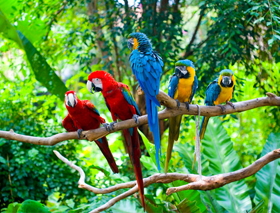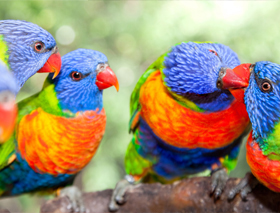We have all been to those fancy bird parks and been awestruck at the sight of those magnificently vibrant creatures. From peacocks to pheasants, all of them move about strutting their stuff proudly and drawing gasps of appreciation from onlookers. So, what is it that is so beautiful about these birds? Well, one of the most impressive things about these birds is their bright and vivacious colour scheme.
The readers must be wondering by now, what is new about all of these? Well, we are trying to draw your attention towards the fact that all these bodacious birds that we admire belong to the male species! It so seems that in birds the males are endowed with impressive and flashy aesthetics, whereas females are mutely coloured and simple creatures. Isn't this quite the opposite of how things are in the human world?!
Now, this is what got us curious and digging about why females are relatively less attractive in our neighbouring bird world. It seems, according to Charles Darwin and his theory of sexual selection, the females were the more demanding partners and expected a higher level of attractive partners. This in turn egged the males to greater evolution, in order to arm themselves with rainbow colours and dazzling displays of their beauty.


Female birds, on the other hand, were not always the drab creatures they seem to be now and they used be as attractive as their male counterparts earlier. Evolution, it seems, turned the once flashy females towards a dull plumage. According to new research, males and females started off with being brightly coloured but the females quickly shed their colour while the males moved towards more showy patterns.
The males had to move towards bright and flashy under the pressure of female choice, while the females became dull so that they could blend in with the environment during delicate periods like nesting, where remaining undetected can promote the wellbeing of their offspring. Thus, the colourful evolution of birds was largely dependent on mating and survival preferences. The females shed their flashy plumage because they didn't require it for mating, whereas the males turned into dandies to ensure the sustenance of their lines. A colourful story indeed!